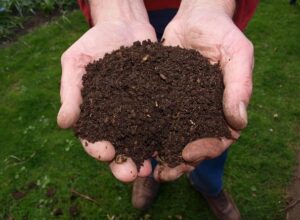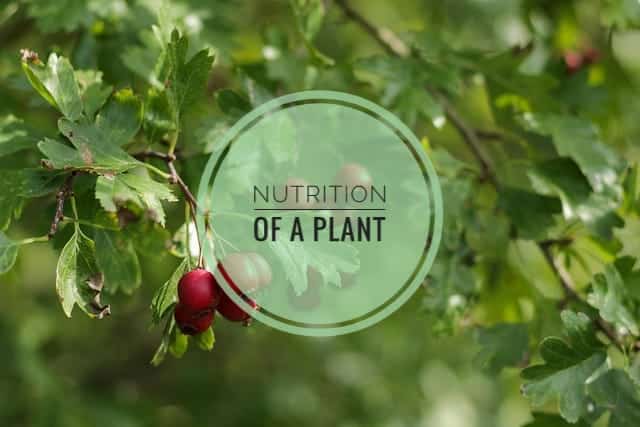Have you ever wondered why a plant looked weak even though you watered it well? Many gardeners face this confusing situation. We feed them water daily, yet leaves turn yellow, flowers drop, or growth slows.
The missing piece is often nutrition of a plant. Just like us, plants need balanced food, not just water, to stay strong and productive.
WHY PLANT NUTRITION MATTERS
Plant nutrition is more than adding fertilizer. It’s about giving the right nutrients at the right time. Without them, plants cannot perform basic life processes like photosynthesis or flowering.
- Supports steady growth and root development
- Boosts resistance against pests and diseases
- Improves flowering and fruit quality
When nutrition is correct, plants thrive naturally with less struggle.
ESSENTIAL ELEMENTS FOR PLANTS
Plants need different nutrients in varying amounts. Some are required in large quantities, while others are needed in small traces.
- Macronutrients: nitrogen, phosphorus, potassium, calcium, magnesium, sulfur
- Micronutrients: iron, zinc, manganese, copper, boron, molybdenum, chlorine
- Carbon, hydrogen, oxygen: absorbed naturally from air and water
Each plays a unique role, and lack of any creates visible symptoms.

ROLE OF MACRONUTRIENTS
Macronutrients are like the main course in a plant’s diet. They directly affect growth, energy, and productivity.
- Nitrogen (N): encourages leafy green growth
- Phosphorus (P): helps roots, flowers, and seeds develop
- Potassium (K): strengthens stems, boosts disease resistance
- Calcium (Ca): maintains cell walls and structure
- Magnesium (Mg): vital for photosynthesis as part of chlorophyll
- Sulfur (S): improves protein and vitamin formation
Balanced use of these nutrients prevents common problems like weak stems or poor yields.
ROLE OF MICRONUTRIENTS
Micronutrients are tiny in quantity but mighty in effect. A shortage may cause hidden problems that many beginners overlook.
- Iron: prevents yellowing between leaf veins
- Zinc: helps in hormone regulation and shoot growth
- Manganese: supports enzyme activity and photosynthesis
- Copper: aids reproduction and lignin formation
- Boron: essential for flower and fruit development
- Molybdenum: important for nitrogen use inside plants
- Chlorine: regulates osmotic balance and photosynthesis
Ignoring these leads to stunted or abnormal growth.
HOW PLANTS ABSORB NUTRIENTS
Plants take nutrients from both soil and air. Roots absorb minerals dissolved in water, while leaves capture carbon dioxide for photosynthesis.
- Soil quality decides how easily nutrients are available
- Root hairs increase surface area for absorption
- pH levels affect nutrient availability
Healthy soil equals better nutrition intake.

NATURAL SOURCES OF PLANT NUTRITION
Not all nutrition comes from chemical fertilizers. Nature offers several rich sources that are beginner-friendly.
- Compost: adds organic matter and slow-release nutrients
- Manure: improves soil fertility and texture
- Mulch: conserves moisture and feeds soil as it breaks down
- Green manures: plants like clover or beans fix nitrogen naturally
These organic methods enrich the soil long term without harmful buildup.
CHEMICAL FERTILIZERS AND THEIR USE
Chemical fertilizers provide quick nutrition. They are concentrated and act faster than organic sources. However, misuse can damage soil and water.
- Urea: high nitrogen content for leafy growth
- Superphosphate: provides phosphorus for roots
- Potash: supplies potassium for strength and disease resistance
Use them wisely by following recommended doses. Overuse burns roots and causes imbalances.
BALANCING NUTRIENTS
Too much of one nutrient can block another. For example, excess nitrogen delays flowering, while too much potassium reduces magnesium absorption.
- Always test soil before adding fertilizers
- Follow correct N-P-K ratios depending on plant type
- Alternate between organic and chemical inputs
Balance ensures steady growth without stress.
SYMPTOMS OF NUTRIENT DEFICIENCY
Plants show clear signs when lacking nutrition. Recognizing them helps in quick correction.
- Yellowing leaves = nitrogen deficiency
- Purple or dark leaves = lack of phosphorus
- Brown leaf edges = potassium shortage
- Weak stems = calcium deficiency
- Interveinal chlorosis = iron or magnesium shortage
Acting early prevents permanent damage.

BEST TIME TO PROVIDE NUTRITION
Timing matters as much as quantity. Young plants need strong roots, while fruiting plants require extra energy.
- Seedling stage: phosphorus for roots
- Vegetative stage: nitrogen for leafy growth
- Flowering stage: potassium for blooms
- Fruiting stage: balanced mix of all macronutrients
Adjusting nutrition with stages ensures higher yield and better quality.
HOW TO PROVIDE NUTRIENTS
Nutrients can be given in different ways. Choose the method depending on the plant and situation.
- Soil application: mixing compost or fertilizer into soil
- Foliar spray: spraying diluted nutrients on leaves
- Liquid feeding: using water-soluble fertilizers for fast absorption
- Slow-release granules: provide steady supply over weeks
Mixing methods often gives the best results.
ORGANIC VS. INORGANIC NUTRITION
Both organic and inorganic sources have pros and cons. A smart gardener combines them for best results.
- Organic: eco-friendly, improves soil health, slow release
- Inorganic: fast acting, precise dosage, but risk of overuse
- Combination: gives both quick results and long-term fertility
Balance is the key to sustainable gardening.
ENVIRONMENTAL FACTORS AFFECTING NUTRITION
Even with enough fertilizer, plants may not absorb nutrients if conditions are poor.
- Soil pH affects nutrient solubility
- Excess water leaches minerals away
- Compacted soil reduces root activity
- Extreme heat slows nutrient uptake
Correcting these factors ensures plants get maximum benefit.
TIPS TO IMPROVE PLANT NUTRITION
Simple practices make a big difference in nutrient management.
- Rotate crops to prevent soil exhaustion
- Use mulch to protect and enrich soil
- Test soil every season for pH and fertility
- Combine slow-release and quick-release feeding
- Avoid overfertilizing to prevent nutrient lock
Consistency matters more than heavy feeding.
FAQs ON NUTRITION OF A PLANT
1. What are the main nutrients plants need?
Plants mainly need nitrogen, phosphorus, and potassium in larger amounts. They also require calcium, magnesium, sulfur, and trace micronutrients for proper growth.
2. How do plants naturally get nutrition?
Plants absorb nutrients dissolved in water from soil. They also capture carbon dioxide from the air and convert it into food through photosynthesis.
3. What happens if a plant lacks nitrogen?
Without nitrogen, leaves turn yellow and growth slows down. Plants become weak because nitrogen is essential for protein and chlorophyll production.
4. Can I use kitchen waste as plant nutrition?
Yes, kitchen waste like vegetable peels, coffee grounds, and eggshells enrich compost. Composting converts them into safe, balanced nutrition for plants.
5. What is the difference between organic and chemical fertilizers?
Organic fertilizers release nutrients slowly and improve soil structure. Chemical fertilizers act quickly but can damage soil health if misused or applied excessively.
6. How do I know if my soil lacks nutrients?
Soil testing is the most reliable method. However, visible signs like yellow leaves, poor flowering, and stunted growth often indicate nutrient deficiency.
7. How often should I feed my plants?
Frequency depends on the plant type and season. Generally, monthly feeding is enough, but heavy feeders like tomatoes may need more regular nutrition.
CONCLUSION
Understanding the nutrition of a plant is essential for every gardener. Water alone cannot keep plants healthy. They need a balanced diet of macronutrients and micronutrients to grow, bloom, and produce fruit.
By learning plant requirements, using both organic and inorganic sources wisely, and watching for deficiency signs, we can nurture strong, productive plants year after year.
